Table of content
Introduction
Sea bass, a prized white-fleshed fish renowned for its delicate flavor and tender texture, has become a staple in kitchens worldwide. Whether you’re a seasoned home cook or a culinary novice, mastering the preparation of frozen sea bass opens doors to convenient, nutritious, and gourmet-quality meals. Frozen sea bass retains its nutritional value and flavor when handled correctly, making it an excellent choice for busy weeknights or elegant dinner parties. This article delves into the nuances of selecting, thawing, and cooking frozen sea bass, offering expert tips, creative recipes, and scientific insights to elevate your seafood game.
Chapter 1: Understanding Frozen Sea Bass
1 The Science Behind Freezing Fish
Freezing is a preservation method that halts microbial growth and enzymatic activity, locking in freshness. Modern flash-freezing technology ensures minimal ice crystal formation, preserving the fish’s texture and flavor. When purchasing frozen sea bass, look for labels indicating “IQF” (Individually Quick Frozen) or “Sushi-Grade” for optimal quality.
2 Selecting the Best Frozen Sea Bass
- Appearance: Avoid fillets with freezer burn (dry, grayish patches) or excessive ice crystals.
- Packaging: Ensure the packaging is intact, with no tears or punctures.
- Sustainability: Opt for sea bass certified by organizations like the Marine Stewardship Council (MSC) to support ethical fishing practices.
Chapter 2: Thawing Techniques
1 The Importance of Proper Thawing
Improper thawing can lead to moisture loss, uneven cooking, and bacterial growth. Follow these methods for safe and effective thawing:
-
Refrigerator Thawing (Recommended):
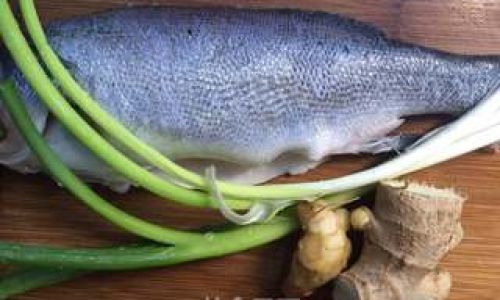
- Place sealed frozen fillets on a plate to catch drips.
- Thaw at 40°F (4°C) for 8–12 hours per pound.
- Ideal for meal prepping; ensures gentle, even thawing.
-
Cold Water Bath:
- Submerge vacuum-sealed fillets in a bowl of cold water.
- Change water every 30 minutes; thaw in 1–2 hours.
- Suitable for last-minute meals.
-
Microwave Thawing (Use Sparingly):
- Use the “defrost” setting at 30% power.
- Cook immediately after thawing to prevent bacterial growth.
2 Avoid Common Thawing Mistakes
- Never thaw fish at room temperature.
- Do not refreeze thawed sea bass unless cooked first.
Chapter 3: Preparation Essentials
1 Cleaning and Pat-Drying
- Rinse thawed fillets under cold water to remove any ice glaze.
- Pat dry with paper towels to ensure crispy skin and even seasoning.
2 Marinades and Seasonings
Marinades enhance flavor and tenderize the flesh. Try these combinations:
- Lemon-Herb Marinade: Olive oil, lemon zest, garlic, thyme, and black pepper.
- Asian-Inspired Glaze: Soy sauce, honey, ginger, and sesame oil.
- Mediterranean Rub: Smoked paprika, oregano, lemon juice, and olive oil.
3 Scoring the Skin
For crispy skin, lightly score the fillet’s surface with a sharp knife, preventing curling during cooking.
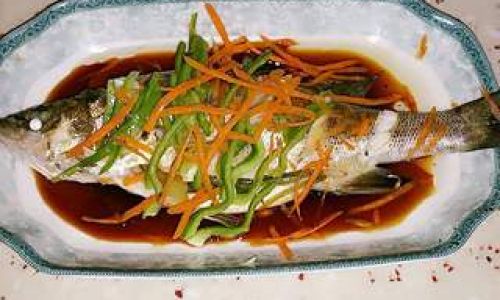
Chapter 4: Cooking Methods
1 Baking
Method:
- Preheat oven to 400°F (200°C).
- Place fillets on a parchment-lined baking sheet.
- Brush with oil, season, and bake for 12–15 minutes until opaque.
Recipe Idea: Baked Sea Bass with Cherry Tomatoes and Basil
- Toss cherry tomatoes, garlic, and olive oil with fillets.
- Bake until tomatoes burst; garnish with fresh basil.
2 Pan-Searing
Method:
- Heat a stainless-steel or cast-iron skillet over medium-high heat.
- Add oil; sear fillets skin-side down for 4–5 minutes.
- Flip and cook for 2–3 minutes until golden.
Recipe Idea: Pan-Seared Sea Bass with Lemon Butter Sauce
- Deglaze pan with white wine, lemon juice, and butter.
- Spoon sauce over fillets; serve with asparagus.
3 Grilling
Method:
- Oil grill grates and preheat to medium-high.
- Grill fillets skin-side down for 5–6 minutes.
- Flip using a spatula; cook for 3–4 minutes.
Recipe Idea: Grilled Sea Bass with Mango Salsa
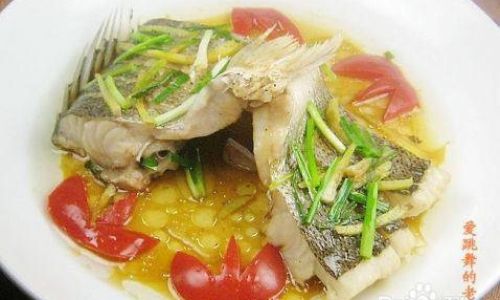
- Top with diced mango, red onion, cilantro, and lime.
4 Steaming
Method:
- Place fillets in a steamer basket over boiling water.
- Steam for 8–10 minutes until flaky.
Recipe Idea: Steamed Sea Bass with Ginger and Soy
- Serve with steamed bok choy and a drizzle of soy-ginger sauce.
5 Poaching
Method:
- Simmer court-bouillon (water, wine, vegetables, herbs) in a skillet.
- Gently slide fillets into liquid; poach for 6–8 minutes.
Recipe Idea: Poached Sea Bass with Saffron Broth
- Infuse poaching liquid with saffron threads; serve with crusty bread.
6 Air Frying
Method:
- Preheat air fryer to 375°F (190°C).
- Lightly oil fillets; cook for 8–10 minutes until crispy.
Recipe Idea: Air-Fried Sea Bass with Parmesan Crust
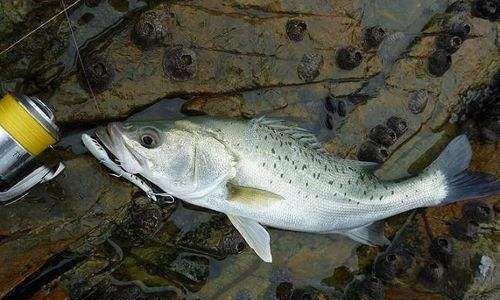
- Top with a mix of panko, Parmesan, and lemon zest before frying.
Chapter 5: Serving Suggestions
1 Pairings
- Grains: Quinoa, wild rice, or couscous.
- Vegetables: Roasted Brussels sprouts, sautéed spinach, or grilled zucchini.
- Salads: Arugula with citrus segments or fennel and apple slaw.
2 Sauces and Toppings
- Beurre Blanc: Emulsified butter sauce with white wine and shallots.
- Chimichurri: Parsley, garlic, and vinegar-based Argentinean sauce.
- Brown Butter: Nutty, caramelized butter with capers and lemon.
Chapter 6: Tips for Perfection
- Avoid Overcooking: Fish is done when it flakes easily (145°F/63°C internal temperature).
- Use a Thermometer: Ensures accuracy without cutting into the fillet.
- Resting Time: Let fillets rest for 2–3 minutes after cooking to redistribute juices.
- Experiment with Flavors: Try global spices like harissa, turmeric, or miso.
Chapter 7: Health Benefits of Sea Bass
- Omega-3 Fatty Acids: Supports heart and brain health.
- Lean Protein: A 3-ounce fillet provides 20g of protein with minimal saturated fat.
- Vitamins and Minerals: Rich in selenium, vitamin B12, and phosphorus.
Chapter 8: Troubleshooting Common Issues
- Mushy Texture: Overthawing or poor-quality fish.
- Sticking to Pan: Insufficient oil or high heat.
- Fishy Odor: Under-rinsing or old stock.
Conclusion
Cooking frozen sea bass to perfection is an achievable feat with the right techniques and a dash of creativity. By understanding thawing methods, experimenting with cooking styles, and embracing global flavors, you can transform a simple fillet into a culinary masterpiece. Whether you’re craving a crispy pan-seared dish or a light steamed preparation, frozen sea bass offers versatility without compromising on taste or nutrition. So, the next time you reach for that frozen pack, remember—you’re holding the key to a restaurant-worthy meal.
Final Tip: Keep a well-stocked pantry with staples like citrus, herbs, and quality oils to elevate your sea bass dishes effortlessly. Bon appétit!


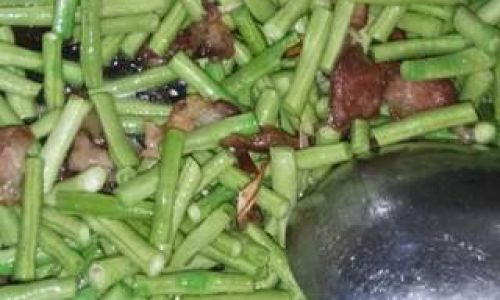
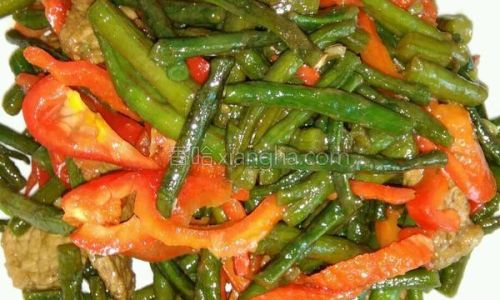
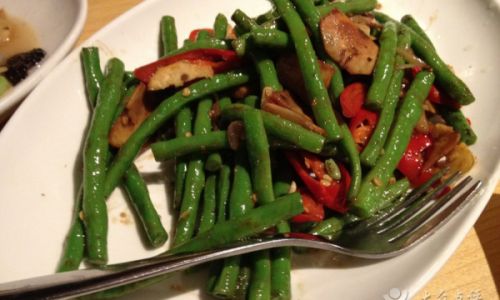
0 comments